Sticking Your Neck Out
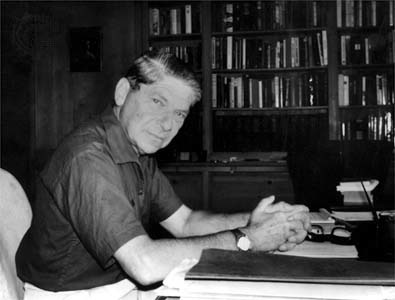
I started reading Arthur Koestler’s works before I hit my teens, and I’m sure that some of the things that he said left an indelible mark on me.
Like this, for example:
“If the creator had a purpose in equipping us with a neck, he surely meant us to stick it out.”
–Arthur Koestler (Hungarian-born British Writer and Philosopher, 1905-1983)
Fatalism and Ethics
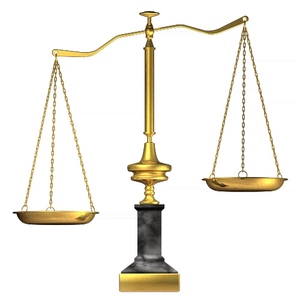
We are constantly inundated by reports of the consequences of bad decision-making, and that leads us to consider two issues: genetic determinism – the notion that our behavior is totally the result of our genes – and whether or not we have free will. This is a hugely important issue, not only for each of us personally, but also for our views about morality and the justice system. And what happens when everyone becomes convinced that they have no free will and that “they’re genes made them do it?”
We know from our own experience as well as empirical studies that changing a person’s sense of responsibility can change his or her behavior.
Interestingly, the link between fatalistic beliefs and unethical behavior seems never to been examined scientifically.
In two recent experiments published in the journal Psychological Science psychologists Kathleen Vohs of the University of Minnesota and Jonathan Schooler of the University of British Columbia decided to see if otherwise honest people would cheat and lie if their beliefs in free will were manipulated.
They gave college students a mathematics exam. The math problems appeared on a computer screen, and the subjects were told that a computer glitch would cause the answers to appear on the screen as well. They were told that to prevent the answers from appearing, the students had to hit the space bar as soon as the problems appeared.
This was a ruse: the researchers were observing to see if the participants surreptitiously used the answers instead of solving the problems honestly on their own. Before the test they used a well-established method to prime the subjects’ beliefs regarding free will. Some of the students were told that science has disproven the notion of free will and that the illusion of free will was an artifact of brain activity. The other group where told nothing about free will.
The results were clear: those with weaker convictions about their power to control their own destiny were more likely to cheat when given the opportunity compared with those whose beliefs about controlling their own lives were left untouched.
The researchers then went a step further to see if they could get people to cheat with unmistakable intention and effort. The experimenters set up a different deception. This time they had the subjects take a very difficult cognitive test. Then they were asked to solve a series of problems without supervision and to score themselves. They also “rewarded” themselves $1 for each correct answer. To collect the cash they had to walk across the room and help themselves to money in a manila envelope.
The psychologists had previously primed the participants to have their beliefs in free will bolstered or reduced by having them read statements supporting a deterministic view of human behavior.
This study shows that those with a stronger belief in their own free will were less likely to steal money than were those with a weakened belief.
The results of this study indicate a significant value in believing that free will exists. The work also raises some significant questions about personal beliefs and personal behavior.
“The flame of Christian ethics is still our highest guide.”
–Sir Winston Churchill (English Statesman, British Prime Minister, 1940-1945 and 1951-1955, and, in 1953, Winner of the Nobel Prize in Literature, 1874-1965)
“You’re born with intelligence, but not with ethics.”
–Masad Ayoob (American Firearms and Self-defense Instructor and the Director of the Lethal Force Institute in Concord, New Hampshire, 1948-)
“Fatalism, whose solving word in all crises of behavior is “All striving is vain,” will never reign supreme, for the impulse to take life strivingly is indestructible in the race. Moral creeds which speak to that impulse will be widely successful in spite of inconsistency, vagueness, and shadowy determination of expectancy. Man needs a rule for his will, and will invent one if one be not given him.”
–William James (American Psychologist and Philosopher, 1842-1910)
“To live lightheartedly but not recklessly; to be gay without being boisterous; to be courageous without being bold; to show trust and cheerful resignation without fatalism -this is the art of living.”
Jean de La Fontaine
“Custom has furnished the only basis which ethics have ever had.”
–Joseph Wood Krutch (American Naturalist, Writer and Critic, 1893-1970)
Decision Making and Internal Balance
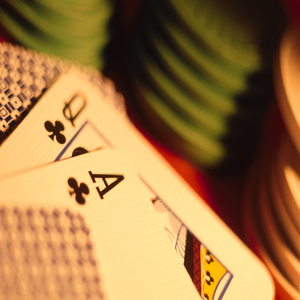
Many of us run into problems when we try to make decisions. In a special section in the October 26 issue of the journal Science, Martin Paulus who is a professor in the Department of Psychiatry at the University of California in San Diego, has marshaled a growing body of evidence that human decision-making is inextricably linked to an individuals’ need to maintain a homeostatic balance.
He goes on to suggest that psychiatrists may need to approach the treatment of psychiatric patients from a new direction: by understanding that such individuals’ behavior and decision-making are based on an attempt to reach an inner equilibrium, in the same way that we try to being our temperature or blood pressure back to a set point. And if the thermostat is broken we may see mental illness and substance abuse.
This makes good sense: in the past decision-making process as a considered series of options and values, but that is not what we see in the clinic. People with addictions and some mental illnesses keep making bad choices, despite being intelligent and insightful.
Recent neuroimaging research shows strong support for the homeostatic nature of decision-making:
The insula is involved in processing interoceptive information: the body’s internal state or sense of balance
Damage to the insula stops addiction to cigarettes
Some of the same brain structures implicated in the urge to take drugs are involved in other biological urges
The question addressed in part by this paper are whether changes in decision-making behavior and associated brain functions are a result of pre-existing characteristics – which may predispose individuals to use drugs – or occur as a consequence of long-term use.
This is certainly an interesting idea, and we shall have to see how it fits as we collect further data.
“The quality of a decision is like the well-timed swoop of a falcon which enables it to strike and destroy its victim.”
–Sun Tzu (Chinese Military Strategist and Author of the “Art of War”, c.400-c.430 B.C.E.)
“The risk of a wrong decision is preferable to the terror of indecision.”
–Maimonides (a.k.a. Rabbi Moses ben Maimon, Spanish-born Jewish Philosopher and Physician, 1135-1204)
“All you have to decide is what to do with the time that is given you.”
–J.R.R. Tolkien (South African-born English Writer, Linguist, Oxford Don and a Member of C.S. Lewis’ Literary Group, “The Inklings,” 1892-1973)
“Decisions are doorway to change and change starts from a moment of decision. One decision can change your life forever!”
–Tony Robbins (American Motivational Speaker and Writer, 1960-)
“Nothing is more difficult, and therefore more precious, than to be able to decide.”
–Napoleon Bonaparte (Corsican-born French Military Strategist, General and, from 1804-1814, Emperor of the French, 1769-1821)
Risk-taking in Teenagers
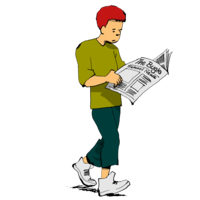
The study of adolescence is in an intersting state of flux.
The expectation that teenagers are rebellious by nature is probably not correct. After all, it is nly recently that adolescence, which more or less corresponds to the teen years, has been recognized at all. As recently as the early 1960, most young people went straight from school to employment, and wore the same clothes as everyone else at work. And of course that is still the pattern in many parts of the world, with the exception of school, which is sadly unavailable to so many. In most cultures teenage rebellion is not recognized at all.
Two years ago Professor Philip Graham, author of an excellent book published by Oxford University Press called ‘The End of Adolescence’ and a leading child and adolescent psychiatrist, challenged the myth that teenagers are trouble. He believes that the social attitudes towards the ‘adolescent stereotype’ that prevail in Western society have significant negative effects on the mental health of young people.
This stereotyping can cause some real problems:
- Low expectations of behaviour are often shared by teenagers themselves, leading to low self-esteem
- at least some of the frustration shown by young people in secondary schools can be attributed to the fact that they are ‘disempowered’ in relation to their intellectual and emotional competence
- The legal position of young people, for instance in relation to the age of criminal responsibility, voting age and the consumption of drugs and alcohol, is wildly inconsistent, and results both in injustice and in inadequate preparation for adult life
- The organisation of mental health services often fails to take into account the need to recognise the ‘young adult’ status of this age group.
The other side of this research is the risky behavior of many young people.
There is an excellent review in this month’s issue of Current Directions in Psychological Science by Laurence Steinberg, Distinguished University Professor and the Laura H. Carnell Professor of Psychology at Temple University in Philadelphia. He is also the Director of the John D. and Catherine T. MacArthur Foundation Research Network on Adolescent Development and Juvenile Justice.
The review points out that over the past 10 years there has been a great deal of new research on adolescent brain development that sheds light on why yonug peple engage in risky and dangerous behavior. And also answer the question about why the educational programs or interventions that have been developed have not been especially effective. According to Steinberg, heightened risk taking in adolescence is the result of competition between two very different brain systems, the “socioemotional” and cognitive-control networks. Both are undergoing maturation during adolescence, but along very different timetables. During the adolescence, the socioemotional system becomes more assertive during puberty, while the cognitive-control system gains strength only gradually and over a longer period of time.
The “socioemotional” system processes social and emotional information, and it becomes very active during puberty, allowing adolescents to become more easily aroused and experience more intense emotion. They also become more sensitive to social influence.
On the other side, the cognitive-control system is the part of the brain that regulates behavior and makes the ultimate decisions, but it is still maturing during adolescence and into a person’s mid-20s and perhaps beyond.
The socioemotional system is not always going full bore. When the system is not highly activated, for example, when individuals are not emotionally excited or they are alone, the cognitive-control network is strong enough to impose regulatory control over impulsive and risky behavior, even in early adolescence.
In the presence of peers, or in situations where emotions run high, the socioemotional network becomes sufficiently activated to diminish the regulatory effectiveness of the cognitive-control network.
Steinberg cites a study in which the presence of peers more than doubled the number of risks teenagers took in a video driving game.
As he says,
“In adolescence, not only is more merrier — it is also riskier.”
“There is a window of vulnerability in teens between puberty and mid-to-late adolescence in which kids have already started to experience the increased arousal of the socioemotional system, but they don’t yet have a fully mature cognitive control system,” he says. “Because their cognitive-control system is still not fully mature, it is more easily disrupted, especially when the socioemotional system is quite excited. And it gets excited by the presence of other people.”
“I don’t want people to think that education should not continue, I just think that it alone is not going to make much of a difference in deterring risky behavior. Some things just take time to develop, and, like it or not, mature judgment is probably one of them.”
Steinberg advocates stricter laws and policies that would limit opportunities for immature judgment that often have harmful consequences. For example, strategies such as raising the price of cigarettes, more vigilantly enforcing laws governing the sale of alcohol, expanding adolescents’ access to mental-health and contraceptive services, or raising the driving age would likely be more effective than education in limiting adolescent smoking, substance abuse, pregnancy, and automobile fatalities.
This is controversial stuff, but is also an illustration of a way in which science can help us make better decisions about how best to help young people to avoid auto-destruction.
Neurologically, teenagers are not just small adults, they are still large children. The problem is heightened because so many young people are constantly multi-tasking and children are being exposed to risky behaviors at ever younger ages, when their brains are least able to handle complex decisions about things that may have long-term consequences for them.
Do Healthy Foods Taste Bad?
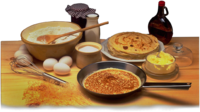
There is a valuable study in the Journal of Marketing, which I must confess is not normally on my overloaded reading list. At least it wasn’t until I discovered an astonishing number of articles that are highly relevant to our basic themes of Health, Integrated Medicine, Meaning and Purpose.
We are all constantly puzzled by the way in which so many people seem to enjoy unhealthy foods. This is a matter of enormous importance: countries like China and India are now getting fattest the fastest, partly because of their peoples’ craving for Western junk food, coupled, in many cases, with a metabolic inability to process the food in the same way that most Europeans do.
Well, according to this study, foods that we think are healthy taste worse. This is the “unhealthy = tasty intuition.” In one of the experiments, test subjects were offered a mango lassi, an Indian yogurt drink that has the consistency of a thick milkshake. Those who were told that the lassi was “unhealthy” liked the drink significantly more than those who were told the drink was “healthy.”
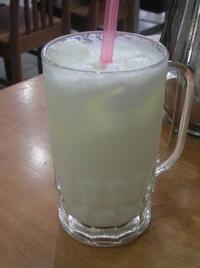
When I was a young student one of my teachers told me that patients always believe that if something tastes foul then it must be doing them some good. A lesson that I had learned from my grandmother when still a small child. By the age of five I already knew that any rash or snivel would mean having to take some pungent and disgusting potion: some secret recipe that had been in the family for generations. Even then I wondered how it was that so many family members had lived to great ages. It didn’t seem possible.
This research fits in with the teachings of my grandmother and my professor. People assume an inverse relationship between tastiness and healthiness. In the study people believed that what they were consuming was unhealthy, they guessed that it would taste better, be more enjoyable to eat and that they would be more likely to choose it in a test.
This is important research and has a number of practical implications for helping people to adopt more healthy eating patterns.
This reminded me of a salutary lesson. Some years ago I spent a very happy year doing a part time course in wine tasting. Fascinating topic taught by Masters of Wine who said that they could tell incredible things about a wine after the smallest taste. A couple of years ago such claims were put to the test in Bordeaux in France, which is, of course, famous for its wines. In the first experiment 54 acknowledged wine experts were asked to give their impressions of two glasses of wine: one white and one red. The wines were actually the same white wine, one of which had been tinted red with an odorless food coloring. But here it gets interesting: the experts described the “red” wine in language typically used to describe red wines. For instance one said tat the colored wine had a “flavor of crushed red fruit.” Not a single one noticed it was actually a white wine.
In a second experiment an inexpensive wine was presented to the experts in two different bottles, one fancy and one plain. The experts gave the two bottles completely different evaluations. The experimenters described their results in terms of the interaction between vision of colors and odor determination. But we can also interpret the data in terms of expectation and perspective. If we expect something to taste good it tends to do so. Yes of course you can get a nasty surprise, but there is a powerful subjective component in how we interpret sensations.
I strongly suggest that you analyze your own reactions to food. Do you believe that healthy foods have to taste awful?
This may be an important key to changing your own eating patterns.
“Life expectancy would grow by leaps and bounds if green vegetables smelled as good as bacon.”
–“Doug Larson”
“As for food, half of my friends have dug their graves with their teeth.”
–Chauncey M. Depew (American Politician and, from 1899-1911, Senator from New York, 1834-1928)
“To lengthen thy life, lessen thy meals.”
–Benjamin Franklin (American Author, Inventor and Diplomat, 1706-1790)
“If you have formed the habit of checking on every new diet that comes along, you will find that, mercifully, they all blur together, leaving you with only one definite piece of information: french-fried potatoes are out.”
— Jean Collins Kerr
(American Author and Playwright, 1923-2003_
Intuitive Decision Making
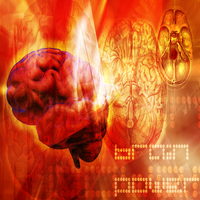
Regular readers will remember some of our discussions about the value and development of intuition and the differences between intuition and instinct.
Almost a year ago I reported on some exceptionally important research into decision making that showed that when making complex decisions rapid intuitive unconscious decisions usually trump conscious deliberation.
There is some brand new research reported in today’s issue of the journal Current Biology.
Li Zhaoping and Nathalie Guyader form the Department of Psychology at University College, London used a computer-based task to examine decision making. Ten volunteers were showed a computer screen covered in over 650 identical symbols, including one rotated version of the symbol. They were asked to decide which side of the screen the rotated image was on.
Given a fraction of a second to look at the screen, the subjects were 95% accurate. But when they were allowed to scrutinize the image for over one second, they were only 70% accurate.
It is likely that the instinctive decisions were more often correct because the preconscious processing regions of the brain recognized a rotated version of the same object as different from the original, whereas the conscious brain could identify the two objects as identical, albeit in different orientations. A great many processes occur below the level of conscious awareness, and they are best called pre-conscious, rather than terms like unconscious, which can lead to confusion with the psychoanalytic term “the unconscious mind” or “subconscious,” which includes many of the autonomic and endocrine functions of the body.
What normally happens is that the conscious or top-level function of the brain, when active, vetoes our initial subconscious decision – even when it is correct – leaving us unaware or distrustful of our instincts and at an immediate disadvantage.When we trust our inbuilt, involuntary preconscious processes for certain tasks they are actually more effective than using our higher-level cognitive functions.
This makes good sense: people and animals are designed to notice anything that is out of the ordinary to help them escape from predators. There is often no time for consious thought. This is also why martial artists practice and practice again so that they can react without thinking.
As a youngster I was a keen fencer. For hours I would use the tip of my foil to keep hitting a squash ball that dangled by a rope from the ceiling. After a while it becomes a reflex, because the pre-conscious regions of the brain take over.
This research once again highlights something very important: use instinctive and intuitive reactions when requied, but balance them with sound reasoning: one without the other is rarely a good idea!
The CSI Effect

Over the last three or four years, American lawyers and law enforcement have been struggling with something that has become known as the CSI Effect.
Following the phenomenal success of the TV show CSI and its spin-offs, a major problem has been developing in courtrooms across America. Jurors are drawn form the ranks of television viewers, and they may have unrealistic expectations about the nature and quality of the evidence that they will be asked to examine. It is being claimed that cases are being lost because the evidence offered might fall far short of what the television-trained jurors have learned to expect.
I have not been able to find any god evidence for the CSI effect, and it may just be a case of attorneys who are upset about losing a case, but I don’t think so. I’ve spoken to quite a number of lawyers as well as physicians who do legal work, and there does seem to have been quite a shift in the courtroom. Most jurors now appear to rate scientific evidence much more highly than eye-witness accounts and confessions by defendants.
Even allowing for artistic license, I’m constantly astonished by the largesse of whoever is funding the CSI laboratories! I spent years working in basic research, and know only too well how hard it can be to make ends meet. Many of the reagents that they slosh around on the set would cost thousands of dollars in the real world.
One very good consequence of CSI is that it seems to be enhancing the status of scientists. At least it is in the United States. The idea of the super-smart well equipped team being able to out-fox the villain is very popular. I’ve recently had to spend a bit of time in England, and the difference in the cops and robbers shows is remarkable. The current crop of English detectives seem to be conflicted and charismatic, and it is they with a combination of street smarts and intuition who solve the crimes, with only an occasional nod toward the backroom boffins. (And yes, I know, “boffin” is a Britishism. Guilty as charged M’lud.)
I recently read that all over the United States, young people are flocking to enroll in science courses. So long as they have something to do with forensic science. A University in West Virginia now boasts 500 students studying forensic science, compared with only four in the 2000-2001 academic year. Another positive for CSI and for science is the key role of female and minority investigators, who all play equal roles in bringing the guilty to book.
The jurors’ demand for scientific evidence reflects a broader trend in society. In these uncertain times, people like to have certainty: The kind that you can get from a printout or a picture. It’s the same in medicine, where people demand certain diagnoses where none might be available. The combination of defensive medicine and the patient demand for certainty have between them fueled an unprecedented rise in the number of tests being ordered, to the exclusion of common sense and clinical skills. I’m a huge fan of what the new technologies are helping us do for people. But it is essential for us to remember that tests are meant to complement and not replace clinical skills.
There is still no good way of understanding a person and his or her distress by doing a scan, inserting a scope or taking a blood test. They all need to be used together. But even when we do that, medical decision making, just like weighing the evidence in court, remains a balance not just of objective data, but also of experience and intuition.
And we need to continue to explain that not all in this world is certain and predictable.
“Uncertainty and expectation are the joys of life. Security is an insipid thing, though the overtaking and possessing of a wish discovers the folly of the chase.”
–William Congreve (English Playwright, 1670-1729)
Child Prodigies
I’ve recently had cause to look at the published literature on child prodigies and there’s not much there. It is very surprising that such an interesting subject has been so little researched.
First a definition from a paper by David Feldman: A “prodigy was a child (typically younger than 10 years old) who is performing at the level of a highly trained adult in a very demanding field of endeavor.” There are three fields in which high-level creative results have been produced before the age of 10: Chess, Mathematics and Music. There are other fields such as art and writing in which young people may be precocious imitators. Pablo Picasso exactly mimicked his father’s drawings. There is an impressive list of child prodigies in other fields as well, but it seems that only in chess, mathematics and music have profound, original insights been contributed by preadolescent children.
There is an interesting association between mathematics and chess: many top chess players are also extremely good at mathematics. In a previous post I mentioned the English Grandmaster John Nunn, and there are many other examples. Men dominate both fields, but that does not necessarily mean that there is a natural gender difference. There’s a very interesting book entitled Breaking Through, by the chess Grandmaster Susan Polgar who was herself a prodigy, as were both of her sisters. Girls have been excluded from many of these events, or they’ve been forced to play only against girls or women. I know a young person who as a pre-teenager wanted to join the school chess club, but only went once, after discovering that all the other members were boys. A shame: she was already quite a strong player.
Both chess and mathematics involve highly developed non-verbal and visuospatial skills. The writer and critic George Steiner had this to say: “The solution of a mathematical problem, the resolution of a musical discord or conclusion of a contrapuntal development, the generation of a winning chess position can be envisaged as spatial regroupings, that have their own internal logic.” He went on to speculate, “All three fields involve enormously powerful but narrowly specialized areas of the cortex. These areas can somehow be triggered into life in a very young child and can develop in isolation form the rest of his psyche. Sexually and socially unformed, very possibly backward in every general respect, the child virtuoso or pre-teenage chess master draws on formidable but wholly localized synapses in the brain.”
In the book The Exceptional Brain, Lee Cranberg and Marty Albert suggested that these “localized synapses” lie in the right hemisphere of the brain, which is primarily involved in non-verbal visuospatial skills and pattern recognition. They also suggested that gender differences in proficiency in chess support the right hemisphere idea. But after reading Susan Polgar’s book, and spending a great deal of time analyzing the world literature on gender differences in cognition, that last point doesn’t convince me.
It is striking that three of the code breakers at Bletchley Park during the second World War, were outstanding international chess players Stuart Milner-Barry, Harry Golombek and Hugh Alexander. These code breakers who helped win the War also utilized similar skills to those needed to master a chess position or to calculate a mathematical problem.
The child prodigies seem to have some things in common:
- An unusually strong talent in a single area
- Reasonably high but not necessarily exceptionally high IQ: some people with astronomically high levels of intelligence have had problems with interpersonal adjustment, unless very carefully nurtured as children.
- Focused energy.
- Sustained effort to achieve the highest levels in their field: even chess prodigies need thousands of hours of practice, and mathematical prodigies need to work at their field.
- Unusual self-confidence.
Adults who want to improve in chess are constantly told to practice as much as possible, and to work on pattern recognition and problem solving. It is just the same in music and mathematics.
Although child prodigies may simply have better neurological equipment, usually coupled with extraordinary encouragement by their parents, I am left with a question that I posed in an earlier post. Mozart often said that when he was composing he felt as if he was taking dictation from God. That he was not the one composing, but that he was in effect picking something up from the Universe. I’ve seen countless highly gifted people tell me that their greatest insights in science, music philosophy or chess just “came to them.” The former chess World Champion Tigran Petrosian once said that he could tell when he was out of form when his calculations did not confirm the validity of his first impressions. All this implies unconscious processing to be sure, but I am not sure that it is all in the brain.
Because there is another phenomenon that has also not been much researched, and that is the phenomenon of simultaneous breakthroughs: two or more people in different parts of the world coming up with new creative solutions at the same time and without any personal contact. I shall have more to say about this in another post, but it speaks to the fundamental interconnectedness of all of us.
Maybe the child prodigies not only have special brains and special parents, but they also have access to a store of information not available to everyone.
At least not yet: We already have training methods that help people access accurate information that they did not know consciously. A story for another day.
“Genius is characterized just by the fact that it escapes classification.”
–Leopold Infeld (Polish Physicist, 1898-1968)
Risk, Reason, Intuition and Avoiding Overwhelm
The British Academy Festival of Science at the University of East Anglia has just finished, and there were a lot of interesting papers this year.
There was some impressive work on two unavoidable parts of life: risk and uncertainty. And how we cope with them. Professor Peter Taylor-Gooby, who is the Director of the Economic and Social Research Council Social Context and Responses to Risk Network (SCARR) at the University of Kent, had this to say: "There is a lot of evidence that concern about risk is directly related to lack of knowledge and the extent to which the event is dreaded…. and trust always involves emotion as well as reason."
How can we restore people’s level of confidence in themselves, in the people around them and in people in positions of authority? The answer lies in emotions instead of reason alone. This is especially true when the perceived risk is related to health, the environment, new technologies and energy.
Peter went on to say this: "The way that information about a particular risk is transmitted and interpreted by various audiences is also important in determining how people respond."
We all engage in some routine tasks without much thought. To apply your full awareness to everything that you do would quickly become exhausting. That is why we develop habits and do some things “On autopilot.” Habits are essential, and we have helped countless people by reprogramming habit patterns.
A problem can occur when you do the wrong things on autopilot and applying too much attention to things that do not require it. The first may damage a relationship: your significant other may not be best pleased to discover that you have been on autopilot during an intimate event. Applying too much attention to things that do not merit them is a good way of developing anxieties and paranoia.
With the increasing complexity of the world, and more things vying for our attention, we are all facing what I call “Overwhelm,” which is just what is sounds like. When we are tired or sick in mind, body or soul. When our subtle systems have become depleted by poor food, irregular breathing, negative people or a negative environment, any of us can become overwhelmed. People with attention deficit disorder, anxiety disorders and bipolar disorder are all more likely to suffer from Overwhelm. Many of the techniques for developing resilience that we have been discussing, are specifically designed to protect you against Overwhelm.
The key for us is to have in place a series of coping strategies that neither rely upon rationality alone or on a mixture of blind faith or hope: that is the best way to deal with growing uncertainties.
“Often you have to rely on intuition.”
-Bill Gates American Computer Genius, Businessman and Co-founder of Microsoft, 1955-
Critics and Creativity
“Great spirits have always encountered violent opposition from mediocre minds.”
–Albert Einstein (German-born American Physicist and, in 1921, Winner of the Nobel Prize in Physics, 1879-1955)
I have had the incredible privilege of knowing, working with, and sometimes sitting at the feet of more than one hundred of the greatest and most influential thinkers, scientists and spiritual leaders of the last fifty years. I have never been interested in listing them: many wish to retain their privacy, and it is much more important for you to get the message, rather than its origin.
It’s great if a Nobel Laureate or a fourteenth generation teacher transmits his or her insights and wisdom. Yet it remains our responsibility to use all our powers – emotional, intellectual and intuitive – to decide what is right for us. I have seen a T’ai Chi Ch’uan master forget the “form,” a “guru” who neglected the most fundamental part of his own teachings, and a Nobel Laureate misquote a study in which I was involved. Such things happen; it just means that we have to bring our own gifts to bear when we decide how to proceed. Some spiritual teachers deliberately throw in some misinformation to see if we are actually working with their material, and not just sitting passively and soaking it up like a sponge.
After all these years spent with these fine people and scores of complementary practitioners, athletes, musicians, opera singers and ballet dancers, all have told me the same thing: the more creative you are, the more you give the world, the stronger the negative reaction. It almost seems to be a law of nature, to stop anyone form rising too high.
Debate is great! Willful destruction never is. Gently pointing out errors or inconsistencies is one of the marvelous strengths of the Internet. Smashing things and people for fun seems singularly pointless! Think about all the people in the public eye, actors and performers, who have been built up only to be thrown down again.
I’ve always been a gossip magnet: it’s just one of those things that I’ve come to expect! Yet we recently had something totally bizarre: we received a number of odd messages from people with strange pseudonyms. One made the bizarre claim that I was going to die. Well, I guess that’s a safe prediction for anyone! But with thanks to this modern Cassandra I am not, in fact, even close! I practice what I preach. Experts who have looked at my biophysical and "energetic" profiles think that I’m going to be around for another fifty to seventy years. And I plan to use those years to do what I can for others: helping, guiding, teaching, encouraging and supporting. And as long as people find them helpful, I’m going to keep the blogs, articles, books and CDs coming!
As Mark Twain said:
“The report of my death was an exaggeration.”
And another wise person had this to say:
“Pay no attention to critics. No one ever erected a statue to a critic.”
Odd comments like those recently sent to me are a terrific gift: they help us to see how far we’ve come with one of the three great pillars of self-realization: detachment. The other two pillars are "Honesty of mind" and "Sincerity of spirit."
You must decide how far along you and I are with those!
Technorati tags: Creativity Criticism Detachment Cassandra






